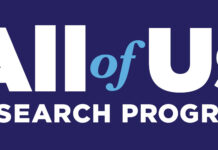Contact Lens 101: a Back-to-School Must for Teens
American Academy of Ophthalmology urges parents to remind their kids that studying up on proper contact lens care can prevent serious eye infections
SAN FRANCISCO, July 27, 2015 /PRNewswire-HISPANIC PR WIRE/ — Many children and teenagers start wearing contact lenses in junior high or high school. However, young people are notoriously poor at caring for their contact lenses, creating a potential gateway for serious eye infections that can cause impaired vision or even blindness. The American Academy of Ophthalmology has declared August Back to School Eye Health Month, and is providing tips for teens and their parents on how to properly care for contact lenses. The Academy is also partnering with the Centers for Disease Control and Prevention to highlight proper contact lens care during Contact Lens Health Week, Aug. 24 to 28.
Photo – http://photos.prnewswire.com/prnh/20150725/242537
Logo – http://photos.prnewswire.com/prnh/20130405/MM89329LOGO
Contact lenses have been implicated in nearly 25 percent of children’s emergency room visits related to medical devices.1 Research has shown that poor contact lens care practices by teens and young people raise their risk of eye conditions such as infectious keratitis and corneal ulcers. In the most severe cases, they may require corneal transplants to restore sight.
Fortunately, many eye infections can be prevented by following simple contact lens care guidelines. Even so, experts say there are lesser known safety tips that teens with contact lenses should follow to avoid eye infections.
Four Contact Lens Tips Every Parent Should Share with Their Teens
- New quarter, new case – Replacing your contact lens case every three months will help keep germs at bay. To make it easy to remember, swap out your case at the beginning of each quarter. A study from the journal Ophthalmology showed that waiting to replace lens cases after 6 months increases the risk of eye infection by nearly 5.5 times.2
- Just say no to H20 – You may be captain of the swim team, but you shouldn’t swim, shower or go in a hot tub wearing lenses. Water from the tap might be clean enough to drink or bathe in, but it’s still home to the parasite Acanthamoeba, which can cause severe eye infections resulting in vision loss.3 For the same reasons, do not use water to rinse or soak contact lenses or cases.
- You snooze, you lose – Never sleep in your contact lenses. The same Ophthalmology study also found that even occasionally sleeping in contact lenses increases the risk of moderate to severe eye infection by 6.5 times. Unfortunately, a recent poll of nearly 100,000 people by BuzzFeed found that about 70 percent of respondents occasionally or regularly sleep in their contact lenses.4
- It’s too late if you wait – Symptoms of eye infections include redness, pain and light sensitivity, and should be examined by an ophthalmologist immediately. Waiting to get examined or treated could lead to vision loss.
“I’ve seen plenty of young people who misuse contact lenses and end up with serious eye infections that are largely preventable with good hygiene and diligence,” said Thomas Steinemann, M.D., clinical spokesperson for the American Academy of Ophthalmology. “Parents can help protect their children’s vision – and their future – by sharing the potential consequences of not caring for their contact lenses the right way, and reinforcing good contact lens habits early on.”
The CDC’s Contact Lens Health Week runs from Aug. 24 to 28. The Academy, CDC and other eye health experts will take part in the CDC Contact Lens Twitter Chat Aug. 24 from 12 p.m. to 1 p.m. EDT. The Academy will be participating using the EyeSmart handle @geteyesmart. Join the discussion by using hashtag #HealthyContactsChat.
Members of the press who wish to speak with contact lens experts can contact the Academy’s Public Relations Department at media@aao.org. For more information on contact lens care and other children’s eye health tips, visit the Academy’s public information website, www.geteyesmart.org.
About the American Academy of Ophthalmology
The American Academy of Ophthalmology, headquartered in San Francisco, is the world’s largest association of eye physicians and surgeons, serving more than 32,000 members worldwide. The Academy’s mission is to advance the lifelong learning and professional interests of ophthalmologists to ensure that the public can obtain the best possible eye care. For more information, visit www.aao.org.
The Academy is also a leading provider of eye care information to the public. The Academy’s EyeSmart® program educates the public about the importance of eye health and empowers them to preserve healthy vision. EyeSmart provides the most trusted and medically accurate information about eye diseases, conditions and injuries. OjosSanos™ is the Spanish-language version of the program. Visit www.geteyesmart.org or www.ojossanos.org to learn more.
1 Emergency Department Visits for Medical Device-Associated Adverse Events Among Children, Pediatrics, 2010
2 Risk factors for moderate to severe microbial keratitis in daily wear contact lens wearers, Ophthalmology, Aug. 2012
3 Clinical characteristics of Acanthamoeba keratitis infections in 28 states, 2008 to 2011. Cornea, Feb. 2014
4 11 Gross Contact Lens Habits You Should Stop Doing Right Away Please, Buzzfeed.com





